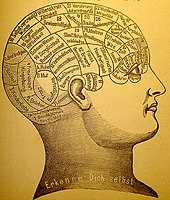
Photo from wikipedia
The scientist Erol Başar passed away at the end of 2017 (Guntekin et al. 2018; Herrmann 2018). He was a pioneer in brain research; he introduced the application of newly… Click to show full abstract
The scientist Erol Başar passed away at the end of 2017 (Guntekin et al. 2018; Herrmann 2018). He was a pioneer in brain research; he introduced the application of newly emerged methods for analysis of electrical brain signals. Between 1969 and 1974, he published five papers in the journal Kybernetik (Başar and Weiss 1969; Başar 1972; Başar and Özesmi 1972; Başar and Ungan 1973; Özesmi and Başar 1974) and ten more papers from 1975–2001 in the same journal, rechristened as Biological Cybernetics (Başar 1975, 1979; Başar et al. 1976; Gönder and Başar 1978; Schürmann and Başar 1994; Başar and Schürmann 1994; İşoğlu-Alkaç et al. 1998; Isoglu-Alkaç et al. 2000; Quiroga et al. 2001; Basar et al. 1997). I had the pleasure of working with Erol Başar for more than 10 years. My contact with him shaped my scientific life and career so profoundly, that, as I now look back at the accidental events in the past, I wonder whether it was by chance that I met him. I happened to hear about the scientist Erol Başar in late 1974 when I started my scientific career at the Brain Research Institute, Bulgarian Academy of Sciences. My colleague at that time, David Popivanov (1940–2006), a friend and my first teacher in neuroscience, was an early pioneer in the emerging discipline of neurocybernetics. At that time, David attended a conference on biomedical engineering in Dresden (still behind the “iron curtain” in the GDR), and when he returned, he was fully inspired by the idea forwarded by Erol Başar at that conference, proposing that neural communications in the brain might follow a principle close to what we knew from radio-electronics as amplitude modulation. Supporting evidence came from observations of electrical oscillations in cortical and deep brain structures in the cat brain recorded during external visual stimulation (flickering) with frequencies around the natural brain rhythms. This idea was so intriguing that it forced me to find all the papers published so far by Erol Başar and his group. What Erol Başar essentially argued was that the principles of general systems theory (Wiener 1961; Solodovnikov 1960) could be applied to biological systems, including neural systems and the brain. More attractively, the oscillation principle was generalized and proposed as a fundamental principle of all natural systems (physical, biological, physiological, social). Erol Başar had already published many papers and two books about the application of general systems theory as an approach to physiological systems research. In between, another book by Başar entitled “Biophysical and Physiological Systems Analysis” (1976) appeared (Başar 1976). Living behind the iron curtain, I was unable to procure it. I was deeply grateful when, in response to my inquiries, he graciously arranged to send me a copy. He was at that time a director of the Brain Research Unit at the Hacettepe University in Ankara. Başar’s book had a major impact on me, as it summarized and concisely presented the state of the art concerning concepts about the oscillation principle in physiological systems. After some years, yet another important book by Erol Başar was published (Başar 1980). It was a wonderful surprise to find that the conceptual and methodological issues presented in this book, in relation to the oscillatory mechanisms of signal * Vasil Kolev [email protected]
Journal Title: Biological Cybernetics
Year Published: 2020
Link to full text (if available)
Share on Social Media: Sign Up to like & get
recommendations!